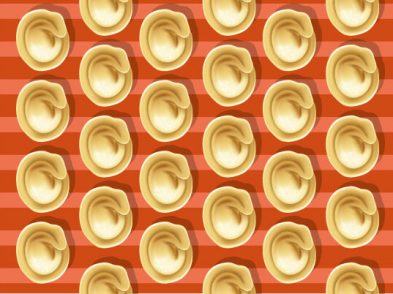After waiting 10 years for it to be completed, Florentines were very unimpressed when, in 1575, they first saw the statue of Neptune towering over his fountain in piazza della Signoria right in front of Palazzo Vecchio. Disappointed because he seemed so static and inexpressive, they disparagingly called him Il Biancone, or the ?white giant.’ Even Michelangelo admonished his sculptor, Bartolomeo Ammannati (1511-1592), for ruining a perfectly good piece of Carrara marble. To make matters worse, it was not long before the locals were using the fountain as a tub for washing their dirty clothes. It was so popular for this purpose that you can still see a marble plaque on the wall behind the monument warning citizens that they would have been hauled off to appear before the magistrate and fined four and a half ducats if they had persisted in using the fountain as a place for doing their laundry or as a dumping ground for wood or rubbish.
To celebrate the marriage of Francesco I de’ Medici to Johanna of Austria in 1565, Baccio Bandinelli was commissioned to sculpt the 4.2-metre statue of Neptune and, although he made the initial model, he died before he could start work on it. Representing the Roman god of the sea, Neptune’s face resembles Duke Cosimo I De’ Medici (1519-74) in recognition of his efforts to make Florence a great naval power through the conquest and improvement of the port of Livorno. However, the rigidity of the sculpture was only accentuated by the vivacious and animated figures that populate the octagonal fountain and its pedestal. Other important sculptors in Florence at the time helped create the fountain’s reclining river gods, the chortling satyrs and the powerful marble sea horses surfacing from the water encased in a giant marble sea shell. Giambologna, for instance, helped make the chained bronze figures of the mythical sea monsters Scylla and Charybdis who, in Greek mythology, lived on opposite ends of the Strait of Messina and were immortalised in Homer’s Odyssey.
A complex aqueduct was built to enable the water for the fountain to be conveyed from the Fonte alla Ginevra, near the San Giorgio gate in Oltrarno, flowing down across the river at the Rubaconte Bridge (now Ponte alle Grazie) to piazza Peruzzi, finally to reach piazza della Signoria from Borgo dei Greci. Because of its prominent position in the city’s most important square, Neptune and his fountain have suffered more damage than has any other open air statuary in town.
When it was first vandalised in 1580, only the four bronze figures and their satyrs remained unscathed. In 1830, during carnival, masked revellers stole a bronze satyr originally sculpted by Giambologna. Never found, it had to be replaced. In 1848, it was damaged during the Bourbon bombardments.
More recently, in 1981, 1986 and 1989, vandals broke off the hooves of the horses. In 1982, football fans painted Neptune’s shoulders bright blue after Italy won the FIFA World Cup in Spain. In 1991, a man in his underpants scaled the deity and tried to remove the spiky ring around his head, put there to defend him from pigeons. But, after, in 2005, drunken youths managed to break off Neptune’s right hand and his trident, security was tightened. Most of the damage described was, however, inflicted on the copy of Ammannati’s work that has stood in the piazza since the nineteenth century. The original is safely housed the National Museum of the Bargello in Florence.
With about 480 municipality-owned palaces, statues and other monuments in Tuscany, protecting them, not only from vandals, thieves and hooligans but also from terrorists, is difficult and expensive. In 2007, the Tuscan Region allotted 100,000 euro to implementing and installing CCTV systems to protect some of Florence’s major landmarks, increasing the video surveillance systems already in operation from 98 to 116. In 2009, a costly state-of-the-art surveillance system was placed 40 meters above the fountain (see TF 101) and police patrols were intensified.
Although video surveillance in public places is a popular security method for increasing public safety and deterring crime, it is also controversial. Opponents brand it as an invasion of privacy. In fact, in June 2010, with the support of the European Commission, the European Forum for Urban Security published a report entitled Citizens, Cities and Video Surveillance: Towards a Democratic and Responsible Use of CCTV. It concluded that these systems are not a ?panacea’ to solve all of a city’s security issues and that their use must be based on a careful case-by-case analysis of the situation and the conditions under which they will operate.
With their targeted approach to the techno-policing of the city’s main historic and artistic sites, decision-makers in Florence seem to have struck that fine balance between fundamental rights and combating delinquency.
Ammananti artworks on show
An major exhibit dedicated to Bartolomeo Ammananti is running at the Bargello Museum, home to a vast collection of his smaller sculpture works, all of which will be on display. The show, Water, Stone and Fire: Bartolomeo Ammananti, marks 500 years since the artist’s birth. For more information on the exhibition, see page 9.








